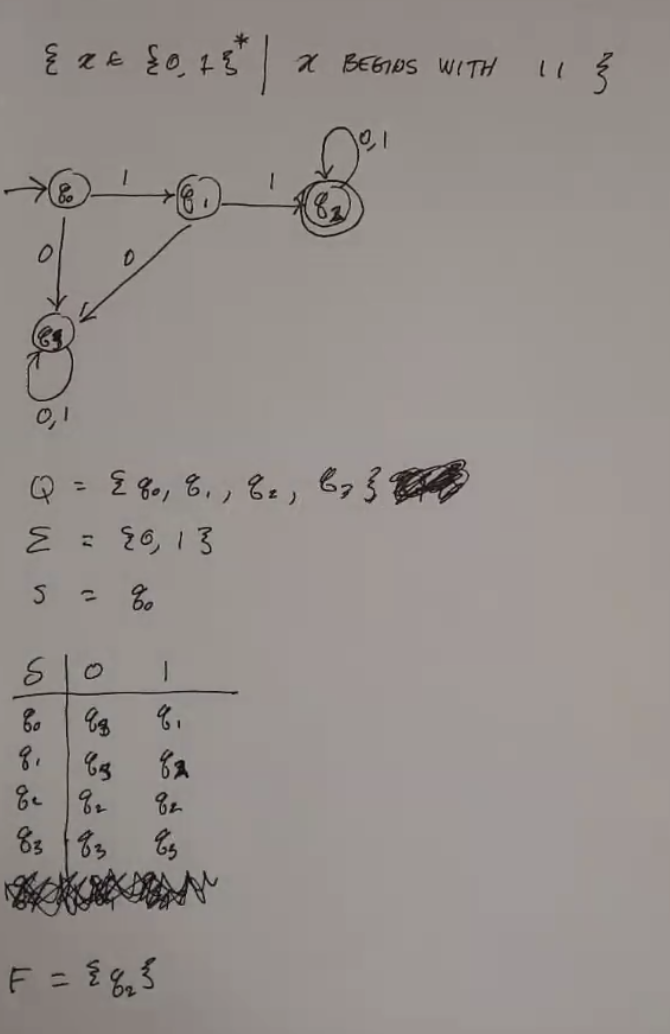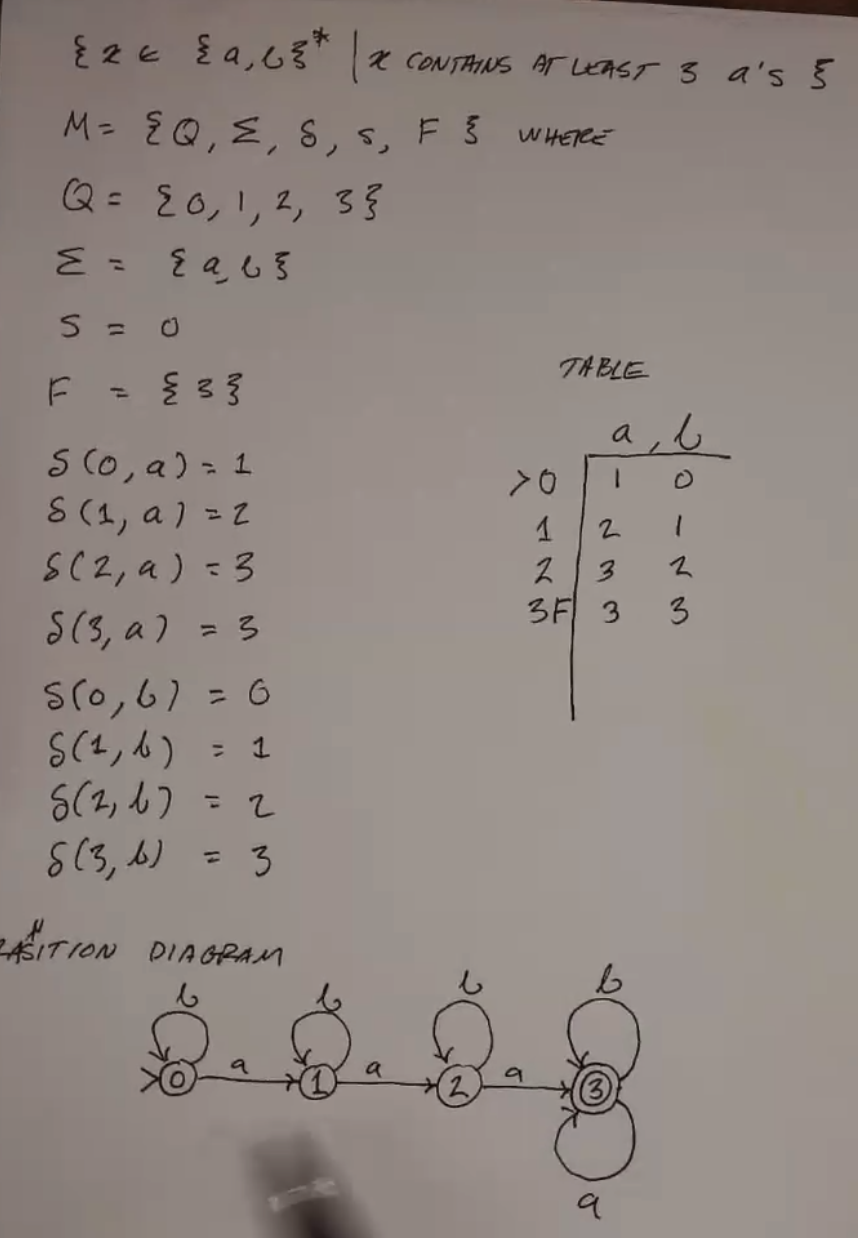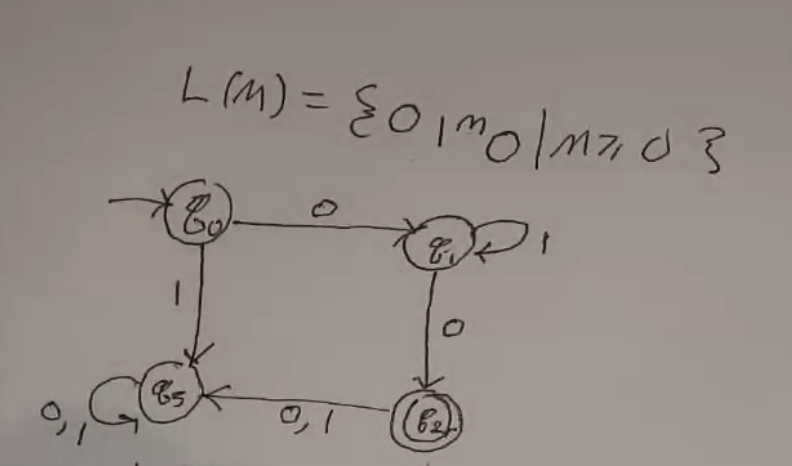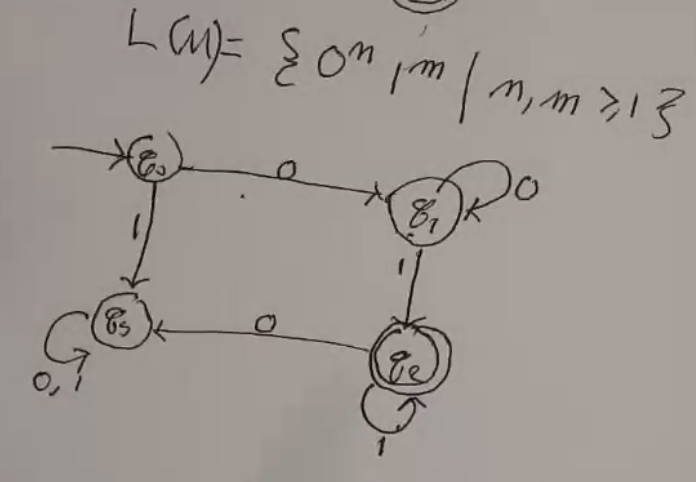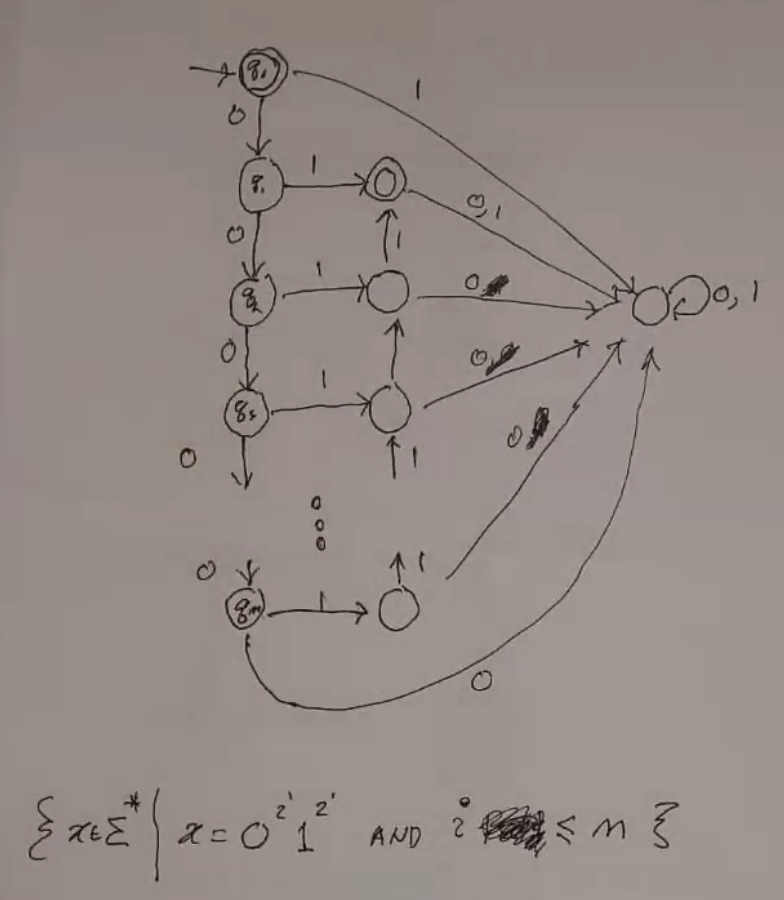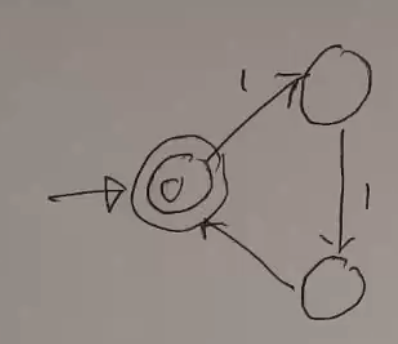DFA¶
Deterministic Finite Automaton (DFA) is a structure:
\(M = (Q, \Sigma, \delta, s, F)\), where:
- \(Q\) is a finite set of states
- \(\Sigma\) is a finite set of symbols (input alphabet)
- \(\delta: Q \times \Sigma \to Q\) is the transition function
- given a current state and input, use delta to find the new state
- \(s = q_0 \in Q\) is the start state
- \(F \subseteq Q\) are the accept/final states
Defns:
- \(x \in \Sigma^*\) if accepted by M if M stops in F
- \(L(M)\) is the language of machine M when it consists of all strings the machine accepts
- \(L \subseteq \Sigma^*\) is regular if there is a DFA M s.t. \(L = L(M)\) (some dfa recognizes it)
DFAs can be represented using a graph/flowchart thing. Final states are represented by double-bordered nodes.
Note
An example of a non-regular language is \(\{0^m1^m | m \geq 1\}\). (e.g. 01, 0011, 000111, etc)
Note
Any finite language is regular, since it can be represented by just a really huge DFA!
Extended Transition Function¶
\(\hat{\delta}: Q \times \Sigma^* \to Q\)
Rather than a transition from one state to the next given a symbol, this function maps a starting state and a string to the result after processing what whole string.
Inductice Defn
- For all \(q \in Q, x \in \Sigma^*, a \in \Sigma\):
- \(\hat{\delta}(q, \epsilon) = q\)
- the extended transition function of any state and the empty string is the same state
- \(\hat{\delta}(q, xa) = \delta(\hat{\delta}(q, x), a)\)
- just the normal transition plus one more
Thms¶
- Given a regular language, the complement of that language is also regular. (let the accept states of the DFA be the rejects of the regular language.)
- \(x \in L(M) \to \hat{\delta}(s, x) \notin F\)
- \(\hat{\delta}(s, x) \in Q - F = F_c\)
- \(\hat{\delta}(s, x) \in F_c\)
- \(x \in L(M_c)\)
Examples¶
Even Ones¶
Consider a DFA that accepts any string with an even number of ones. (\(\Sigma = \{0, 1\}\))
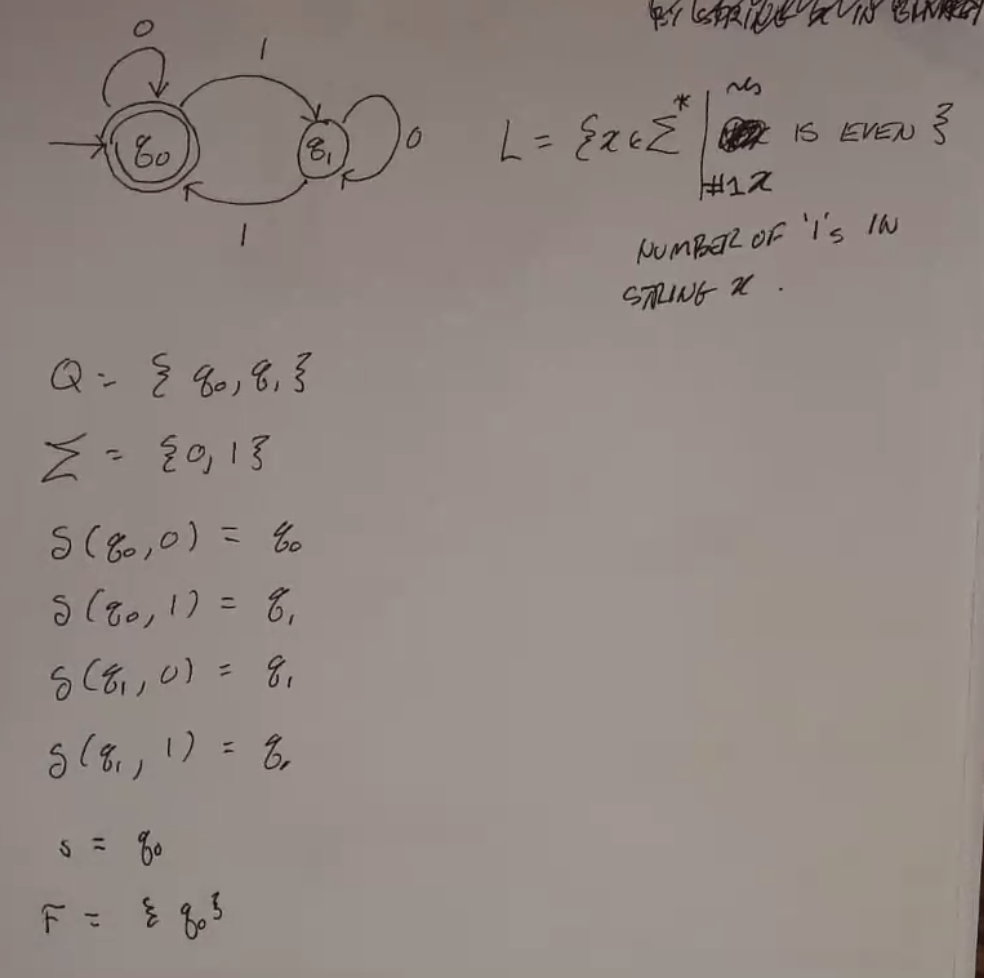
3 Consec As¶
Consider a DFA that accepts any string that contains at least 3 consecutive As. (\(\Sigma = \{a, b\}\))
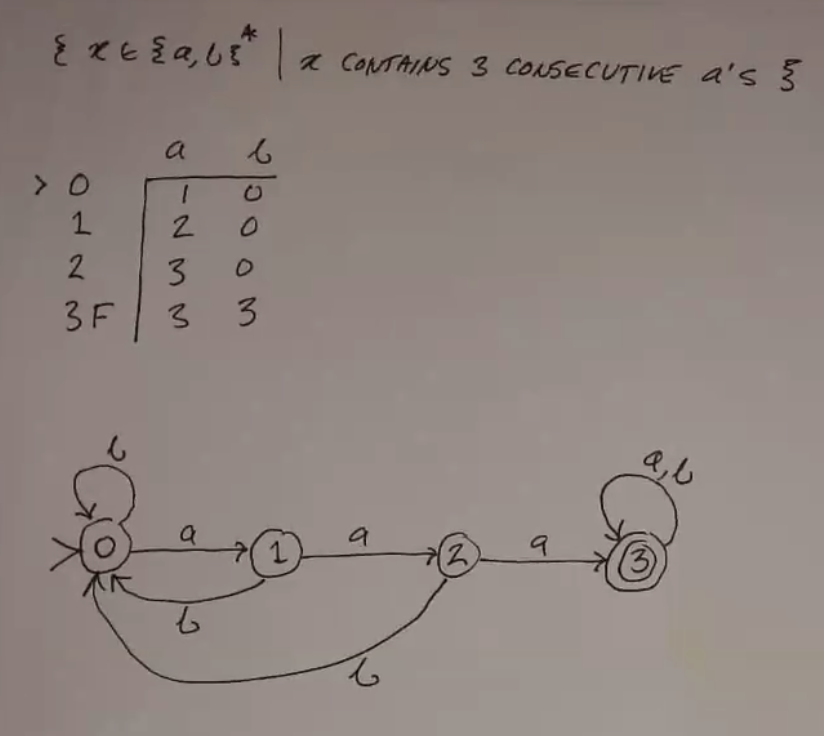
Odds/Evens¶
This DFA tracks how many 1s and 0s are found in a string. 16 different languages can be defined with choices of accept states:
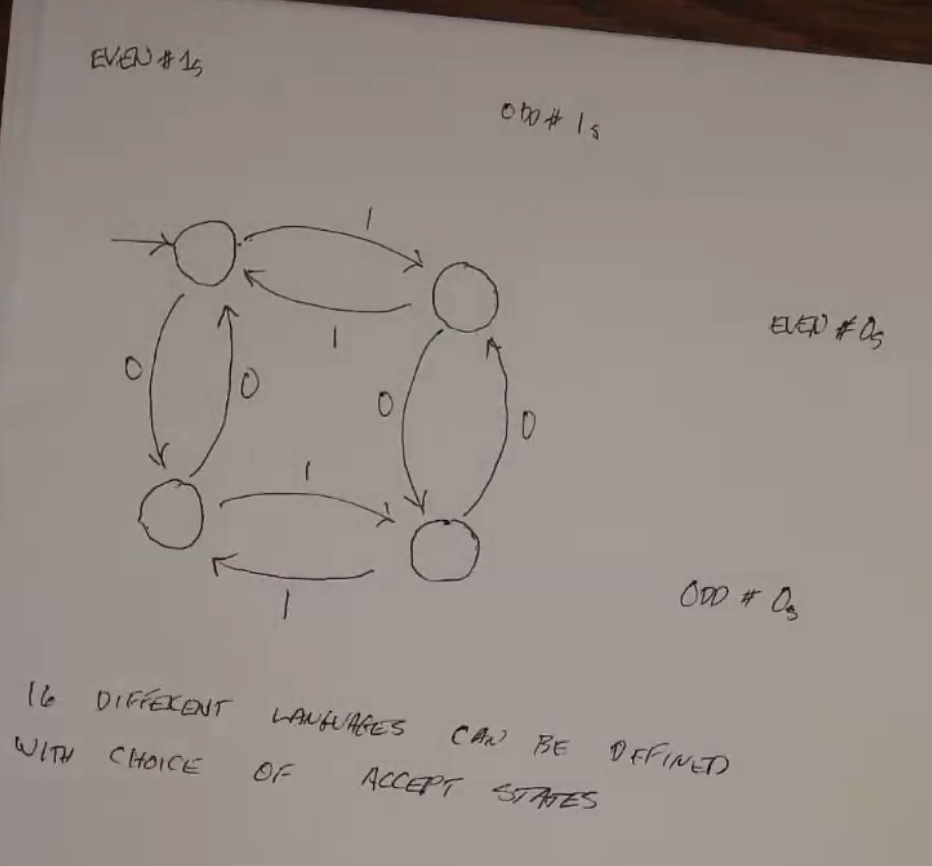
Intersection¶
aka Product Construction
Thm: If languages A and B are regular, then \(A \cap B\) is regular.
- there exists \(M_1 = (Q_1, \Sigma, \delta_1, s_1, F_1)\) with \(L(M_1) = A\)
- there exists \(M_2 = (Q_2, \Sigma, \delta_2, s_2, F_2)\) with \(L(M_2) = B\)
- since A and B are regular, we can build a DFA \(M_3\) s.t. \(L(M_3) = A \cap B\).
- let \(M_3 = (Q_3, \Sigma, \delta_3, s_3, F_3)\)
- \(Q_3 = Q_1 \times Q_2 = \{(p, q) | p \in Q_1, q \in Q_2 \}\)
- \(F_3 = F_1 \times F_2 = \{(p, q) | p \in F_1, q \in F_2 \}\)
- \(s_3 = (s_1, s_2)\)
- \(\delta_3: Q_3 \times \Sigma \to Q_3\)
- \(\delta_3((p, q), a) = (\delta_1(p, a), \delta_2(q, a))\)
- extended transition function:
- \(\hat{\delta_3}((p, q), \epsilon) = (p, q)\)
- \(\hat{\delta_3}((p, q), xa) = \delta_3(\hat{\delta_3}((p, q), x), a)\)
Pf: \(L(M_3) = L(M_1) \cap L(M_2)\)

Ex: Given two machines that accept an even number of 0s and odd number of 1s, the intersection can be constructed as such:
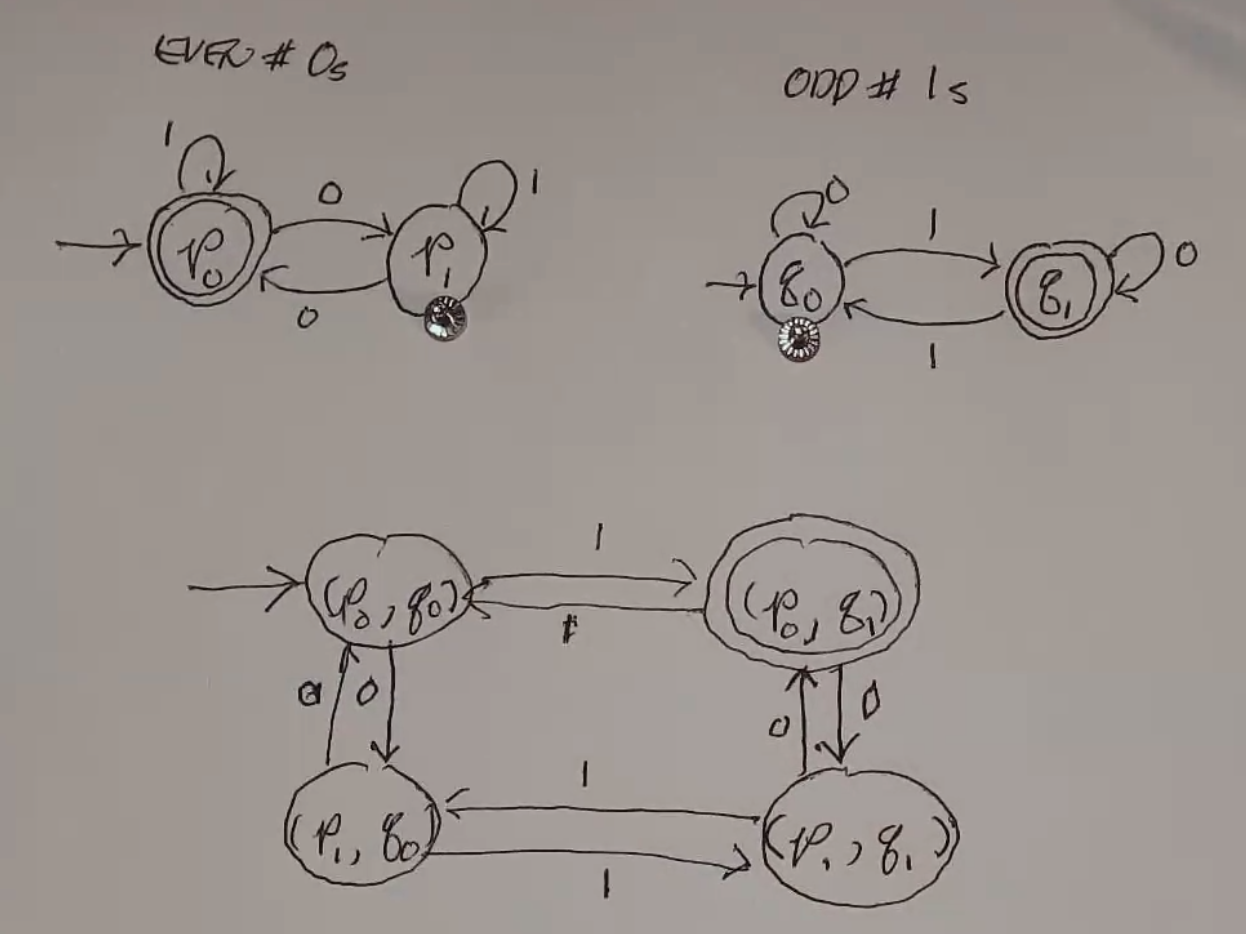
Ex: Even number of 1s and form \(01^m0\)
Note that there is no way into \((p_1, q_0)\).
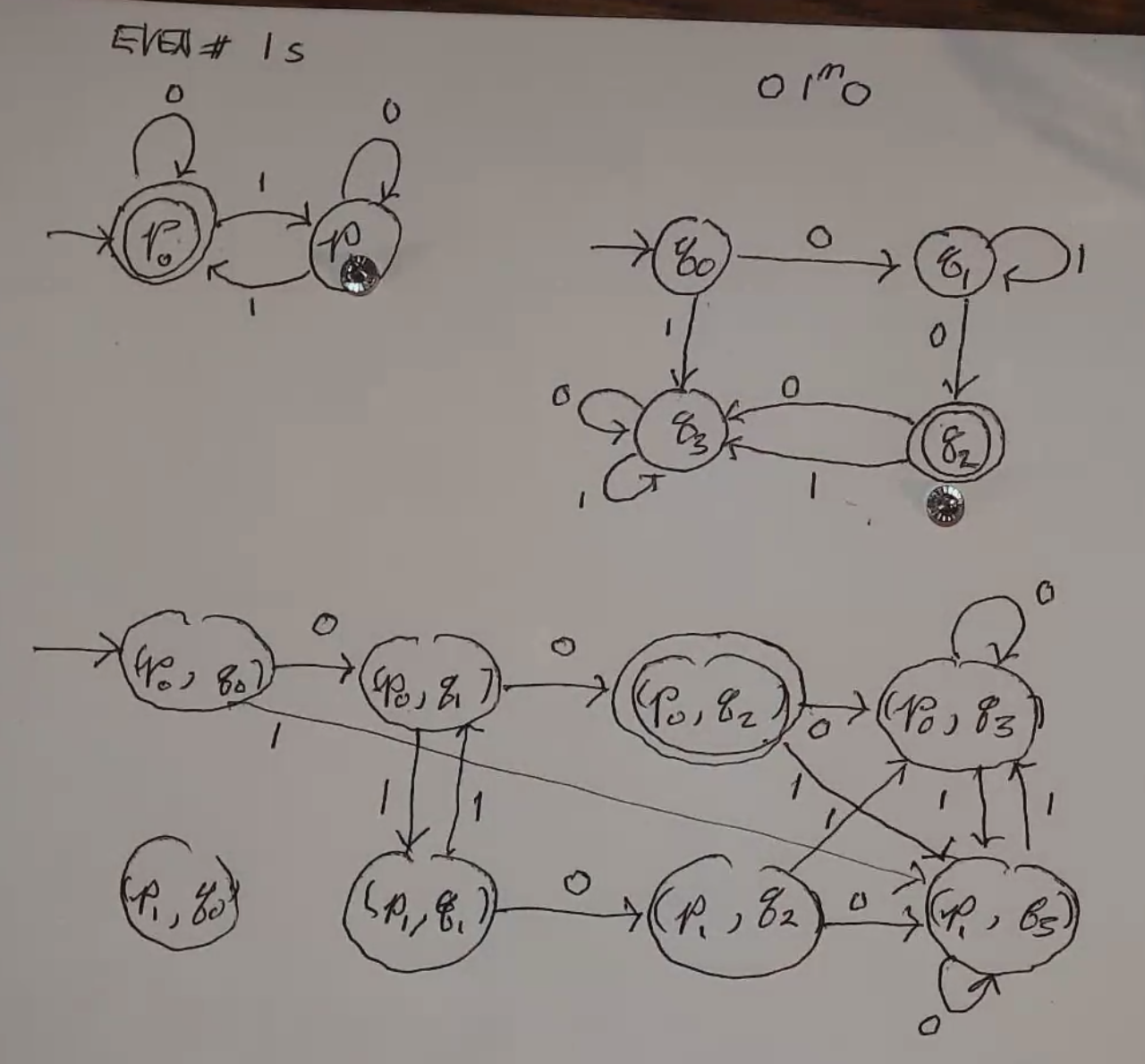
Union¶
Thm: If languages A and B are regular, then \(A \cup B\) is regular.
- A is regular \(\implies \lnot A\) is regular
- B is regular \(\implies \lnot B\) is regular
- \(\lnot A \text{ and } \lnot B\) regular \(\implies \lnot A \cap \lnot B\) regular
- \(\lnot A \cap \lnot B\) regular implies \(\lnot (\lnot A \cap \lnot B)\) regular
- \(\lnot (\lnot A \cap \lnot B)\) regular implies \(A \cup B\) regular (demorgans).
